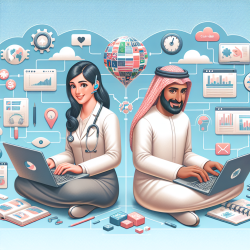In the ever-evolving field of augmentative and alternative communication (AAC), practitioners are constantly seeking ways to improve their skills and expand their knowledge. The landscape of AAC is rich with resources, organizations, and technological advancements that can significantly enhance the support provided to individuals with communication impairments. Drawing insights from the research article "Augmentative Communication: A Review of Available Resources and Approaches" by Penny Parnes, this blog aims to guide practitioners in navigating these resources and applying research outcomes to refine their practice or inspire further exploration.
Understanding the Landscape of AAC
The field of AAC is supported by a network of organizations and publications dedicated to the advancement of communication aids for those with speech impairments. Notable among these is the International Society for Augmentative and Alternative Communication (ISAAC), which plays a pivotal role in advocacy, international developments, and the dissemination of knowledge through conferences and publications. ISAAC's efforts are complemented by the Rehabilitation Engineering Society of North America (RESNA) and the International Project on Communication Aids for the Speech Impaired (IPCAS), both of which contribute to the interdisciplinary advancement of rehabilitation through technology and international collaboration.
Key Publications in AAC
Practitioners in the AAC field can access a wealth of information through several key publications:
- Communication Outlook: A newsletter offering updates on technical developments, advocacy, and practical tips for clinicians.
- Communicating Together: A magazine that covers a range of topics including Blissymbolics and other AAC systems, research updates, and interviews with experts.
- Augmentative and Alternative Communication (AAC): An official journal of ISAAC, dedicated to in-depth examination of systems and devices for communicatively impaired individuals.
These publications serve as essential resources for staying informed about the latest research, technological advancements, and practical strategies in AAC.
Teleconferencing and Collaboration
The use of teleconferencing systems like Confer has opened new avenues for collaboration and information sharing within the AAC community. These platforms allow practitioners, researchers, and users of AAC devices to engage in discussions, share insights, and explore new developments in speech synthesis and device applicability. Such collaborative environments foster a community of practice that is vital for the continuous improvement of AAC strategies and technologies.
Technological Applications and Considerations
The application of technology in AAC requires a strategic approach to evaluate new devices and systems. Practitioners must consider several factors when assessing the suitability of a technological solution for an individual's communication needs:
- Input Requirements: The physical, cognitive, and linguistic abilities required to operate the device.
- Memory and Expansion Capabilities: The device's ability to grow with the user's expanding communication needs.
- Programmability: The flexibility of the device to be programmed to meet the individual's specific communication needs and wants.
- Output Options: The appropriateness and intelligibility of the device's output, including speech synthesis, printed text, and visual or tactile signals.
- Technical Complexity: The operational complexity of the device and its compatibility with other technologies.
By considering these factors, practitioners can make informed decisions about the most suitable AAC devices and systems for their clients, ensuring effective and personalized communication support.
Advancing Skills through Continuous Learning
To effectively navigate the resources and approaches available in the field of AAC, practitioners must engage in continuous learning and professional development. Attending conferences, participating in webinars, and engaging with the AAC community through teleconferencing platforms are invaluable for staying updated on the latest research and technological advancements. Moreover, exploring the wealth of information provided by key publications in AAC can enhance practitioners' understanding and application of augmentative and alternative communication strategies.
In conclusion, the field of AAC offers a dynamic array of resources, organizations, and technological solutions that can significantly enhance the support provided to individuals with communication impairments. By leveraging these resources, engaging in continuous professional development, and applying research outcomes, practitioners can improve their skills and contribute to the advancement of augmentative and alternative communication practices. To explore the foundational insights and resources discussed in this blog, please follow this link to read the original research paper: Augmentative Communication: A Review of Available Resources and Approaches.










